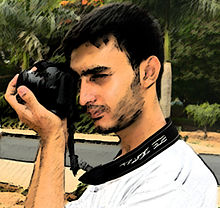
Photo rules, or how do I behave as a photographer.
Generally
To begin with, a general note: different countries, different customs.
In other words, what is normal with us can become very problematic in certain places. Also, one incident of a situation can have different effects depending on the region of a country. Police officers at a tourist attraction are more used to being photographed. So the same faux pas can end in jail in a remote province. Therefore, please always remember, the situation can also be decisive. What is tolerated in crowds of tourists during the day does not necessarily apply at night.
So do not try to take photos in secret, but openly. Also try to clarify on site whether there are any concerns before taking the picture. Contact the guide or a supervisor at the attraction. A questioning hand gesture can also be helpful to an official.
As a photographer, you are in a minefield of potential missteps.
Furthermore, it should be noted that although a photo for private use is unproblematic, the same photo as a publication can very well be a violation of copyright or the right to one's own image.
Photographing people
Please notice that a person has a right to their own image. Please read the Wikipedia article Right to your own picture.
Therefore, people who cannot be seen as an accessory to a picture should be asked for permission.
Be considerate of your beliefs too.
Officials
Note that in many countries it is not allowed to depict uniformed officers on duty (in Italy e.g. customs officers)
Recording of buildings
Photographing military and important buildings is not allowed in every country. This can also include train stations, etc. (Syria is particularly strict here)
Copyright
It does not apply everywhere Wikipedia: freedom of panorama, that means, I can take photos, but the picture is still subject to copyright. Which means I am not allowed to use it without the permission of the copyright holder. This is especially true for works of art in public spaces (statues, etc.). It is highly recommended to read the article given above as a link, as it answers some open questions.
Another helpful article can be found here on Wikimedia Commons (English).
Recordings in museums and buildings
If there is a photography ban, please comply and ask why. You may be given permission to take pictures without the flash. Often there is a commercial interest behind it, but it can also be that the photography ban has conservation (no glaring light) or security reasons (optical alarm system or type of security).
Furthermore, it is quite possible that there is rightly a ban on photography for copyright reasons. So if works by artists are exhibited who are not yet 70 years dead, a photo ban can be the prerequisite for the work of art to be shown at all.
For private rooms, the privacy of a person must also be observed here, as is the right to one's own picture.
Final remark
Identify yourself as the person who wants to take pictures. And note and accept a no. Stay friendly even if you say no. Personally, I have often been able to take more photos with questions than the tourist who simply did it and therefore flew out of the Louvre (at the time, flashing was prohibited).
literature
- : Right for photographers. Galileo design, 2013 (2nd edition), ISBN 978-3-8362-2580-9 ; 436 pages. € 34.90. The author, lawyer, vice-president and legal advisor of the German Association for Photography (DVF) says about copyrights and house rights, freedom of panorama or the right to one's own image, what works and what doesn't with photography and usage rights. Separate chapters on photo law in Austria and Switzerland.
Web links
- Photo traps: Legal cliffs when publishing images on the web. Online version of the article in c't 21/2012
